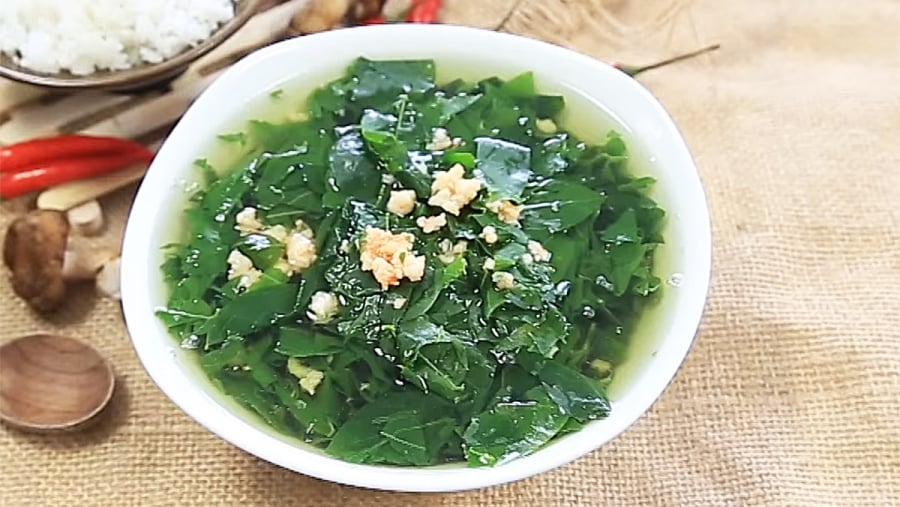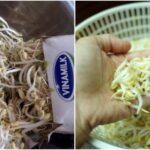Pennywort Soup: A Traditional Vietnamese Concoction
In traditional Vietnamese medicine, pennywort leaves are believed to possess a unique combination of sweet and cooling properties. When cooked, the leaves are said to retain their nutritional value, offering a range of health benefits, including detoxification, diuretic effects, blood enrichment, and anti-inflammatory and antibacterial properties. For centuries, pennywort has been revered as a precious herbal remedy, known for its ability to both “attack and supplement,” meaning it helps enhance overall health and boost the body’s immunity to fight against diseases. The concept of “supporting the righteous and expelling the evil” reflects pennywort’s role in protecting and nourishing the body’s positive energy while eliminating harmful external influences.

Pennywort Soup
Modern medicine also recognizes the nutritional value of pennywort, which is rich in vitamins A and C, with levels surpassing those found in grapefruit, lemon, and orange. This helps combat aging and improves brain function. Pennywort also contains high levels of protein, iron, manganese, and phosphorus, offering a plethora of health benefits.
Proper Handling and Preparation of Pennywort
Pennywort leaves have a glossy surface and a resilient texture that doesn’t easily absorb water. It is common practice to rinse and gently knead the leaves before cooking to soften them and allow better absorption of flavors. However, this practice can result in the loss of essential nutrients. To retain the maximum nutritional value, it is recommended to gently knead the leaves after rinsing them. Only when the leaves are immersed in boiling broth should they be gently pressed to retain their nutrients. It is important not to rinse the leaves after kneading to avoid losing valuable nutrients.
Cooking Pennywort Soup
Ingredients: Pennywort soup can be prepared in a variety of ways, depending on personal preference and taste. It can be cooked with mung beans, lean meat, clams, shrimp paste, or even with meat broth for added flavor. The most common and convenient method is to cook it with minced or ground lean meat, seasoned with a variety of spices to enhance the flavor. Thinly sliced shallots are then fried to a golden brown to add a fragrant touch.
Cooking instructions: Fry the shallots until fragrant, then add the seasoned lean meat and cook until done. Next, pour in just enough hot water according to the desired serving size and bring it to a boil. Once it reaches a rolling boil, season with spices to taste, increase the heat, and add the pennywort leaves, submerging them in the water. Pennywort leaves cook quickly, so turn off the heat after a few boils to avoid overcooking. Avoid stir-frying or prolonged cooking, as this can deplete the vitamins and affect the color and flavor of the dish.
Desired Outcome
The perfect pennywort soup should have a clear, sweet broth, soft and tender leaves, and fragrant lean meat. This dish is not only refreshing and cooling but also aids in digestion, provides calcium, and is especially beneficial for pregnant women and children. It embodies the essence of traditional Vietnamese cuisine, offering a wholesome and delicious experience.
The Ultimate Guide to Mango Riches: Unveiling the Secret to a Bountiful Harvest
In the world of Feng Shui, the placement of a mango tree can be a powerful tool for attracting wealth and prosperity. The ancient practice believes that positioning a mango tree in a specific area can invite an abundance of positive energy, bringing good fortune and prosperity to those who heed its wisdom.



































